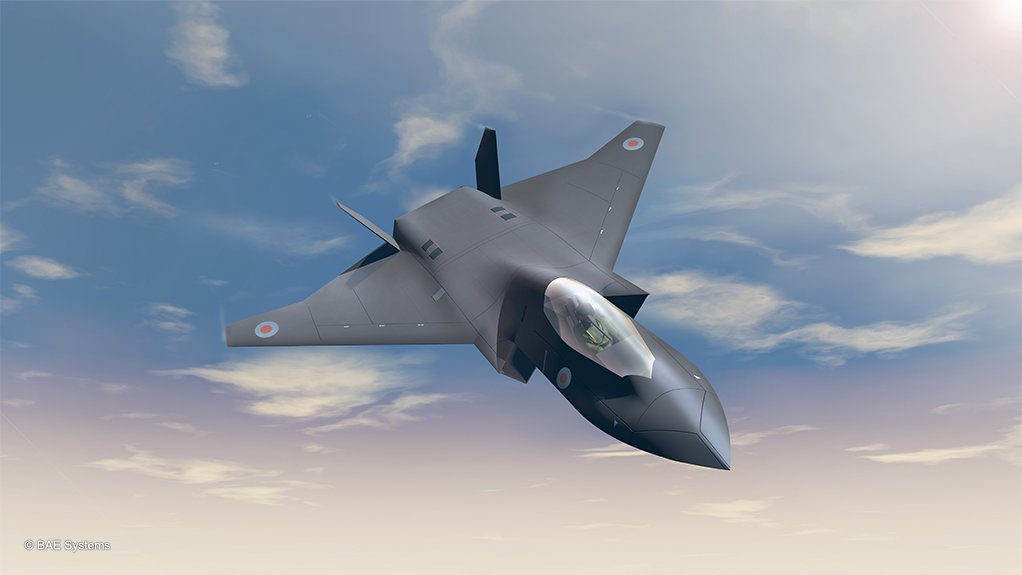Progress on UK sixth-generation combat jet technology demonstrator revealed
Leading UK aerospace and defence companies, plus the country’s Ministry of Defence (MoD), have given an update on the development of their Flying Technology Demonstrator project, a key part of the Tempest programme to develop a sixth-generation multirole fighter aircraft. Tempest is the British designation for the aircraft that is being developed under the Global Combat Air Programme (GCAP), which is a joint initiative between the UK, Japan and Italy. Unconfirmed reports state that GCAP will be funded 40% by the UK, 40% by Japan and 20% by Italy.
The Flying Technology Demonstrator is currently an entirely British contribution to the GCAP. Industrially, the project is led by airframer BAE Systems, propulsion group Rolls-Royce, airframe and avionics company Leonardo UK (part of the Italian Leonardo group and responsible for Tempest radar and avionics) and missile manufacturer MBDA UK (part of the pan-European MBDA group). But it also involves many medium and small-scale UK enterprises. The most famous of the smaller UK companies involved is renowned ejection seat manufacturer Martin Baker.
“The Flying Demonstrator programme is a remarkable effort to design and build a supersonic stealth jet that will prove integration and develop our national skills, while providing data and learning in support of Tempest entering service by 2035,” affirmed UK MoD Director Future Combat Air Richard Berthon. “Today [Wednesday], for the first time, we are able to lift the lid on some of the key work that is taking place on this important programme. Tempest is no longer just an idea or concept on a computer; our industry partners have made real, tangible progress and are bringing the programme to life through innovative projects, such as the flying demonstrator.”
The last time the UK developed and flew a flying technology demonstrator for a combat aircraft programme was 40 years ago; that had served as a precursor for the quadrinational Typhoon multirole fighter programme. The Tempest demonstrator is intended to fly within the next four years.
BAE Systems has constructed a totally new facility at its Warton complex in England, where it has set up a tailor-made simulator for the demonstrator aircraft. Pilots from the company, from Rolls-Royce and from the UK Royal Air Force have already “flown” more than 150 hours using this simulator. This programme is providing essential data to support the future real-world flight trials.
Also, BAE Systems engineers have used auto-coding to develop safety-critical systems software in days, rather than weeks. This is the first time that this has been done in the design process for a military aircraft. This software is fed into the simulator, allowing a rapid assessment of how the aircraft will handle and perform during complex flight manoeuvres, years before it actually flies.
And at Rolls-Royce’s complex at Filton, in Bristol, England, engineers from that company and from BAE Systems have been carrying out aerodynamic engine testing. Advanced new manufacturing processes have been employed to create an engine duct with a unique shape, which reduces the speed of the air it ingests from supersonic speeds at ingress to subsonic speeds when it reaches the engine face. It also has fewer moving parts than current fighter intake designs, which increases Tempest’s stealth.
Further, again in cooperation with BAE Systems engineers, Martin Baker has been carrying out ejector seat trials for the demonstrator aircraft. They have been done using a rocket sled accelerated to speeds greater than 500 mph (805 km/h), from which the ejector seat is launched.
Article Enquiry
Email Article
Save Article
Feedback
To advertise email advertising@creamermedia.co.za or click here
Comments
Press Office
Announcements
What's On
Subscribe to improve your user experience...
Option 1 (equivalent of R125 a month):
Receive a weekly copy of Creamer Media's Engineering News & Mining Weekly magazine
(print copy for those in South Africa and e-magazine for those outside of South Africa)
Receive daily email newsletters
Access to full search results
Access archive of magazine back copies
Access to Projects in Progress
Access to ONE Research Report of your choice in PDF format
Option 2 (equivalent of R375 a month):
All benefits from Option 1
PLUS
Access to Creamer Media's Research Channel Africa for ALL Research Reports, in PDF format, on various industrial and mining sectors
including Electricity; Water; Energy Transition; Hydrogen; Roads, Rail and Ports; Coal; Gold; Platinum; Battery Metals; etc.
Already a subscriber?
Forgotten your password?
Receive weekly copy of Creamer Media's Engineering News & Mining Weekly magazine (print copy for those in South Africa and e-magazine for those outside of South Africa)
➕
Recieve daily email newsletters
➕
Access to full search results
➕
Access archive of magazine back copies
➕
Access to Projects in Progress
➕
Access to ONE Research Report of your choice in PDF format
RESEARCH CHANNEL AFRICA
R4500 (equivalent of R375 a month)
SUBSCRIBEAll benefits from Option 1
➕
Access to Creamer Media's Research Channel Africa for ALL Research Reports on various industrial and mining sectors, in PDF format, including on:
Electricity
➕
Water
➕
Energy Transition
➕
Hydrogen
➕
Roads, Rail and Ports
➕
Coal
➕
Gold
➕
Platinum
➕
Battery Metals
➕
etc.
Receive all benefits from Option 1 or Option 2 delivered to numerous people at your company
➕
Multiple User names and Passwords for simultaneous log-ins
➕
Intranet integration access to all in your organisation





















